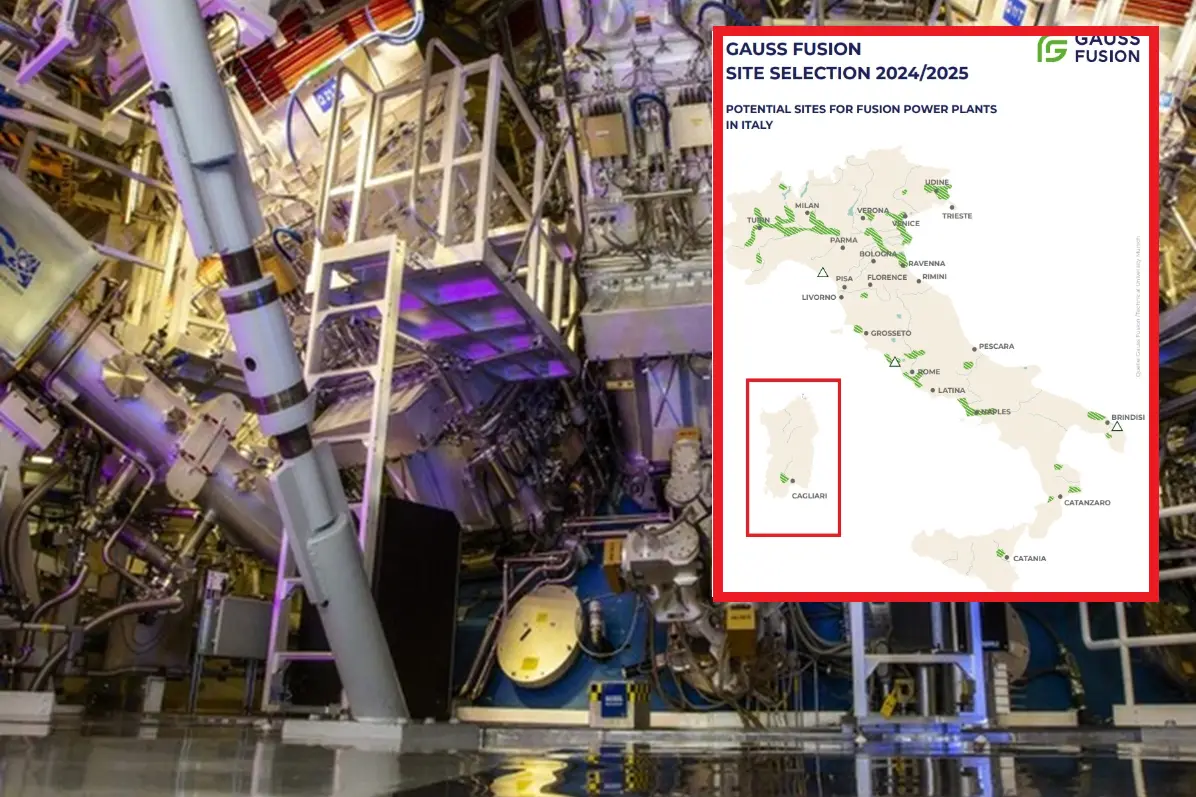Nuclear power: an area in the Cagliari area is included in the list of suitable sites for new fusion power plants.
The map drawn up by Gauss Fusion, a European company created to build the next-generation plant: 22 clusters in total in ItalyPer restare aggiornato entra nel nostro canale Whatsapp
The area northwest of Cagliari (there are no more precise indications, but from the maps it appears to be the industrial zone of Macchiareddu) is also among the areas potentially suitable for hosting the first generation of nuclear fusion plants to be built in Europe. This is according to a study conducted last year by Gauss Fusion, a greentech company founded specifically to build the continent's first commercial-scale fusion power plant , which worked in collaboration with the Technical University of Munich.
Let's be clear: Sardinia is one of 150 industrial clusters and 900 sites identified in Europe. Of these, 22 clusters and 196 sites are in Italy. Seven hubs are in the northern regions, located between Milan, Cremona, and Venice. "A strategic corridor," a statement reads, "that combines high industrial density, adequate network capacity, and the presence of established energy infrastructure."
The Cremona area, the study states, has particularly favorable characteristics thanks to its proximity to major high-voltage power stations. In Southern Italy, 15 smaller clusters have also been identified, primarily located near coastal areas, which represent further development opportunities within a framework of territorial rebalancing and the enhancement of existing infrastructure. The Cagliari site is also on this list.
Potential locations have also been identified in Germany, France, Spain, Switzerland, Denmark, the Netherlands, Austria, and the Czech Republic, primarily in energy-intensive industrial or urban areas. The assessment, the statement continues, was conducted based on uniform technical, environmental, and infrastructural parameters, including grid connectivity, access to cooling and heat recovery systems, and the possibility of converting existing energy infrastructure.
As for Italy, "future fusion plants will not be isolated infrastructures, but will need to be integrated into existing regions, production chains, and energy networks. This study demonstrates that Europe—and Italy in particular, with its industrial districts—already has the conditions in place to accelerate the transition from research to the adoption of fusion on an industrial scale. This is a concrete step toward a safer, more competitive, and truly sovereign energy model," says Milena Roveda, CEO of Gauss Fusion.
The study results will now be discussed with European governments, industrial partners, and regulatory authorities across the continent. Gauss Fusion is expected to finalize its site selection by the end of 2027.
Enrico Fresu
